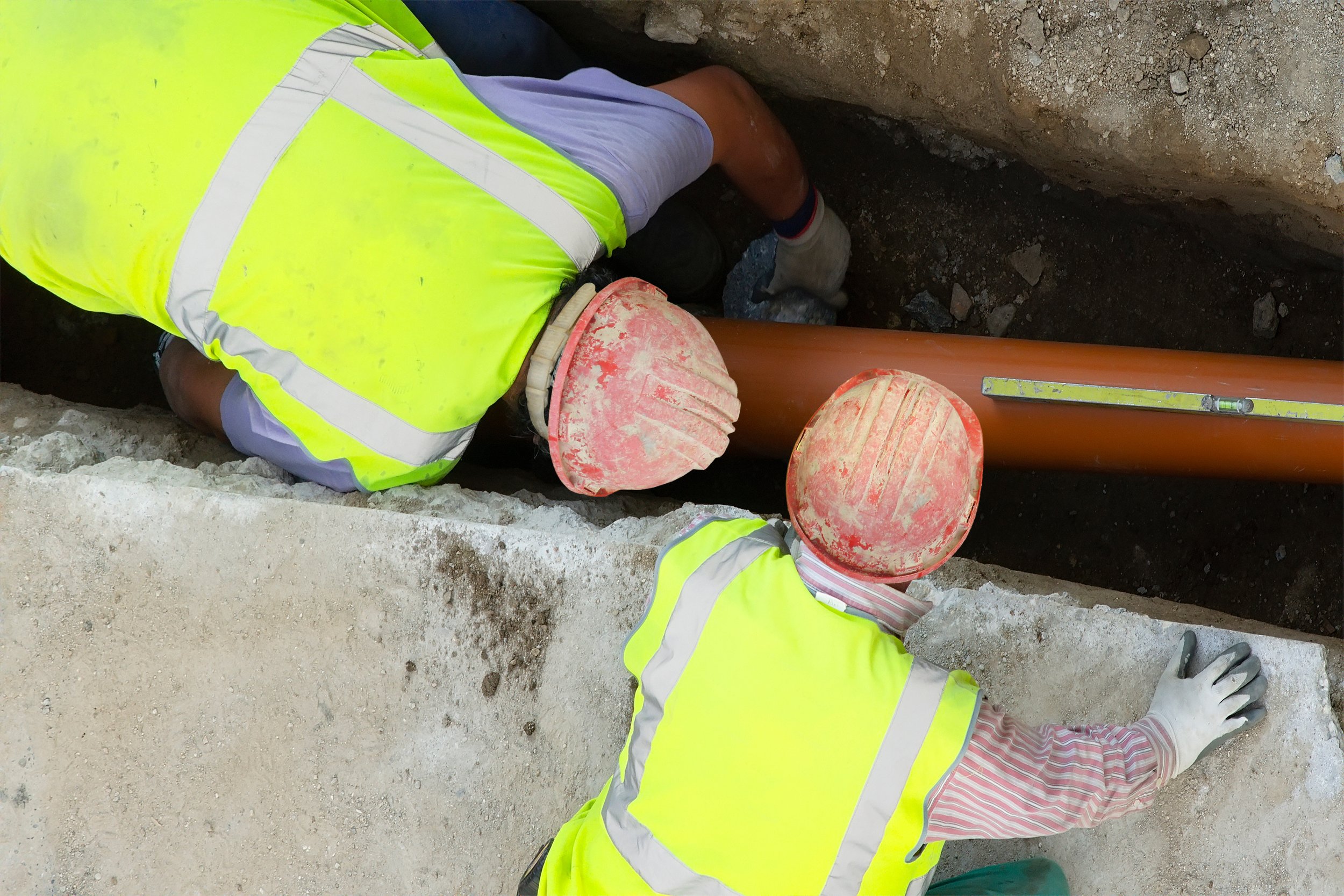THE VALUE OF AS-BUILTS FOR WATER LINES
As-built drawings are modified sets of drawings submitted by a contractor upon the completion of a job. They reflect all of the changes that were made during the construction process. The main purpose of an as-built drawing is to record any changes made during the building process that deviate from the original plan. As-builts are useful for many reasons, one being the value they bring to water lines which in our opinion are some of the most troublesome proposed utilities on a job site.
Test Failure Causes
GPS can help locate leak areas
The easier requirements, such as keeping it under the frost line and passing a bacteria test, are straightforward. The aggravation typically begins when the line must pass an air test, a pressure test, and a two-hour pressure hold test at 1.5x the typical mainline pressure. It sounds pretty straightforward, but a simple grain of sand on the rubber gasket is enough to make one of these tests fail. Other possible failure scenarios are a folded-over rubber gasket, an under-torqued mechanical fitting, an over-deflected pipe, or a defective valve. It happens more often than anyone would like.
So what can be done about it? Once the game plan is set, the fun begins – the tedious task of trying to find the leak located somewhere in the backfilled line. Of course, the ideal situation is a total failure because the problem becomes evident – the bubbling dirt gives it away. However, we are not here to discuss the obvious failures. We want to share with you how the GPS can help you find subtle failures. The GPS cannot help you pinpoint the leak, but it can help you locate the areas where the leak is likely to be found.
On The Job Site
Crew working on a water line
Here's a real-life example that may sound familiar or maybe one you’ve experienced yourself. While working on a job, a crew noticed an 18” ductile water main had been put in the previous season by a different crew. It was connected to the existing with a valve and capped at the other end with a blow-off valve to allow pressure testing. A different crew was brought in the following season to install curb, grade a parking lot, and establish grade for the sidewalks. They were tasked with pressure testing the installed 18” water main. They performed an air test, and it all passed. Next, it was time for the hold test, which turned into a 2-hour hold at 150 psi. At first, it appeared that everything was done right with a fire hydrant midline and blow-off valve at the capped end to allow the crew to blow off air in the line. The valve was turned on slowly and forced the air out of the line. Everything held, and then they shut down the hydrant and the blow-off valve. It held until the 1 ½ hour mark and then started losing pressure at about 1 psi every 2-5 minutes. It was not much but enough to fail. This is probably the worst kind of failure and now the crew was tasked with finding its origin. The foreman from the previous season had set the line without taking as-built shots on the bells or the mechanicals. Without that data, this crew didn’t know where any of it was, so they had no choice but to dig the entire 500’ line – which was a huge and tedious undertaking! Digging the entire run included stopping at every bell and mechanical fitting digging from within a foot of the line and all around the bell or fitting to check for small signs of leaks and even after all that, the leak was not located. Eventually, the leak was found. However, the amount of time spent finding the leak would have been substantially shortened if the crew had known where to locate the bells and mechanicals in the ground.
GPS Location Guidance
Leaks in water lines will always be found at a bell, valve, mechanical fitting, saddle, or tee. If crews follow the As-Built Checklist guidelines, these points can easily be found, and you can precisely excavate and therefore avoid having to dig blindly. Additional items you may include in water line as-builts are easements, property lines, and service saddles. They also help identify abandoned pipe sections that have been removed or grouted with a mason plug. If you are crossing other utilities or drainage, we recommend you take those GPS shots because they can act as a witness for future excavations. Identify all valves, fittings, and appurtenances. Shoot the connection to the existing water main by labeling the existing pipe at the connection as the existing tie-in point. To further discuss our expertise with waterline as-builts and how using a GPS is a beneficial tool, give us a call.


